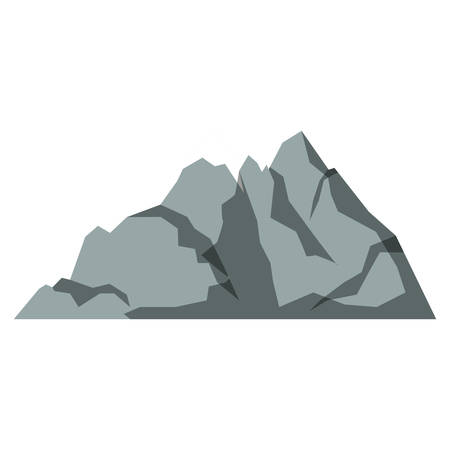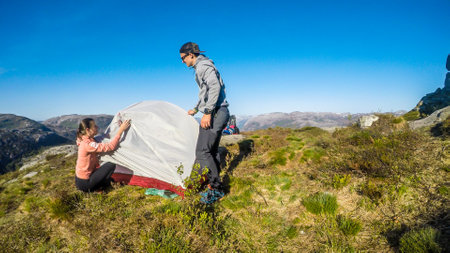Choosing the Right Campsite Cooking System
When it comes to multi-day adventures in the American backcountry, picking the right campsite cooking system isn’t just about taste—it’s about survival, efficiency, and keeping your group fueled for whatever the wild throws your way. Whether you’re heading out with a couple of buddies or leading a full squad into the woods, understanding your options is critical.
Stoves: The Backbone of Backcountry Cooking
Backpacking stoves come in a variety of forms, from canister stoves prized for their light weight and quick boil times, to liquid fuel stoves that thrive in frigid or high-altitude conditions. For ultralight solo missions, consider a compact isobutane canister stove—small enough to fit in your palm, but powerful enough for morning coffee and freeze-dried meals. Larger groups might need a two-burner propane stove, offering more real estate for pots and pans when cooking for a crowd. Always check local regulations—some parks restrict open flames or certain fuels during fire season.
Grills and Fire Pits: For When Flavor Matters
If you’re base camping and weight isn’t an issue, portable grills and collapsible fire pits can elevate your culinary game. Charcoal grills offer that classic BBQ flavor but add extra pounds to your load. Portable fire pits keep your impact low while letting you cook over wood—just make sure you bring enough fuel or have a legal source on hand. In areas where fires are banned, stick to gas-powered systems to stay on the right side of the law.
Assessing Fuel Choices
Your choice of fuel will make or break your trip. Isobutane canisters are lightweight and easy to use but can struggle in freezing temps. White gas excels in cold weather and at altitude but requires priming and careful handling. Propane is reliable and widely available at outdoor retailers across the U.S., though it’s bulkier for backpackers. For extended trips off-grid, plan ahead so you don’t run dry when you need hot food most.
Packability, Weight, Efficiency, and Durability
Every ounce counts when you’re miles from the nearest road. Solo hikers should prioritize ultralight systems that nest inside cookware. Small groups can get away with mid-sized setups, striking a balance between convenience and carry weight. For car campers or big crews, durability trumps all—look for rugged gear built to survive rough handling and repeated use. No matter your style, always test your system at home before hitting the trail—you want confidence, not surprises, when hunger strikes far from civilization.
2. Essential Cooking Gear Checklist
Before you head out on a multi-day campsite adventure, your kitchen setup can make or break the experience. Smart meal prep starts with having the right gear—reliable tools that stand up to real-world abuse and pack down for travel. Here’s a hard-nosed checklist, built for American backcountry realities and campfire culture.
Must-Have Cookware and Utensils
| Gear Item | Why It Matters | Pro Tips |
|---|---|---|
| Stove & Fuel | Primary heat source; choose between propane, butane, or multi-fuel models for reliability. | Always pack extra fuel; test your setup before hitting the trail. |
| Pots & Pans (Nested/Stackable) | Versatile for boiling, frying, and simmering; saves space. | Anodized aluminum balances weight and durability. |
| Cups & Bowls (Unbreakable) | Serving and eating; avoid glass—go with stainless steel or BPA-free plastic. | Collapsible options save pack room. |
| Utensil Set (Spoon, Fork, Spatula, Ladle) | The basics for prepping and serving meals. | Titanium or reinforced plastic for best strength-to-weight ratio. |
| Knives (Chef’s Knife & Paring Knife) | Critical for food prep—don’t rely on a single multi-tool blade. | Add a blade guard or sheath for safe packing. |
| Cutting Board (Compact/Foldable) | Keeps your knife sharp and your campsite sanitary. | Bamboo or flexible plastic boards are light and easy to clean. |
| Lighters & Waterproof Matches | You’re nowhere without fire; redundancy is survival wisdom. | Stash lighters in different packs as backup. |
| Cleaning Supplies (Biodegradable Soap, Scrubber, Quick-Dry Towel) | Keep your kitchen kit clean to prevent illness and wildlife issues. | Pack everything in a mesh bag so it dries fast between uses. |
| Cooler or Bear-Resistant Canister (if needed) | Keeps perishables fresh; mandatory in bear country. | Use block ice for longer cooling power on extended trips. |
| Campsite Kitchen Organizer (Roll-Up or Hanging Bag) | Keeps all small gear accessible and off the ground—no more lost utensils at dusk. | Look for MOLLE-compatible panels or grommets to hang from trees or picnic tables. |
Campsite Kitchen Organization Setups
The Grab-and-Go Bin System
Description: Use labeled plastic bins—one for cookware, one for food, another for cleaning supplies. Stack them in your vehicle or tent vestibule.
Benefits: Fast access, weather protection, easy repacking.
Tactical Tip: Assign color codes (e.g., red = cooking, blue = cleaning) for no-fuss sorting at night or in bad weather.
The Hang-It-All Rig
Description: Carabiners and gear loops strung between trees keep pots, utensils, towels, and trash bags suspended above dirt and critters.
Benefits: Saves table space, deters wildlife, keeps essentials dry.
Tactical Tip: Always hang scented items away from sleeping areas in bear country.
The Survival Angle: Redundancy and Durability
This isn’t about Instagram aesthetics—it’s about staying fed, safe, and efficient when conditions get rough. Always double-check your essential kit before departure. In American wilderness areas where help may be hours away, missing just one key item—like a stove lighter—can turn dinner into a cold snack. Invest in gear that stands up to repeated use: think full-tang knives over folding blades, metal cookware over cheap plastics. With the right setup dialed in, you’ll be ready to cook up hot meals no matter how long the adventure runs.

3. Food Storage, Safety, and Bear-Proofing
Keeping Your Food Safe: Core Principles
Out in the backcountry, your food isn’t just calories—it’s also bait for wildlife, from persistent squirrels to powerful black bears. A smart campsite cooking system includes a solid food storage strategy to prevent spoilage, keep critters at bay, and avoid dangerous animal encounters. In warm weather, pack high-protein perishables in hard-sided coolers with ice packs or dry ice; for longer hauls, consider freeze-dried meals that resist spoilage and minimize scent. Never leave food or trash unattended—this is non-negotiable wilderness discipline.
Bear-Proofing: Gear and Tactics
If you’re adventuring in bear country—think the Rockies, Sierras, Appalachians—bear-proof food management is mandatory. Use certified bear canisters (required in many U.S. parks) or rugged bear bags hung 10-15 feet off the ground and 6 feet from any trunk. Stash all food, scented items (toothpaste counts!), and trash inside at least 100 yards downwind from your tent. Don’t cook where you sleep; keep kitchen zones separate to avoid attracting midnight visitors. Check local regulations for approved storage methods—rangers don’t mess around when it comes to wildlife safety.
Critter Control: Small Animal Tactics
Mice, raccoons, and chipmunks can be relentless in established campgrounds. Use odor-proof sacks or hang food using a counterbalance system if canisters aren’t required. Always clean up spills immediately and store utensils with your food stash—not inside your tent.
Leave No Trace: Responsible Food Management
Practicing Leave No Trace isn’t just about ethics—it’s survival common sense. Pack out all food scraps and trash in sturdy resealable bags. Strain dishwater before dispersal and pack out solids. Never bury leftovers or toss them into the woods; you’ll train animals to associate campsites with snacks, putting future campers (and wildlife) at risk. Bottom line: If it goes in your pack, it leaves with you.
4. Meal Planning and Prep for Extended Trips
Building Balanced, Energizing Menus
If you want to keep your edge on a multi-day adventure, meal planning isn’t just a “nice to have”—it’s mission-critical. You’re not just packing calories; you’re fueling your body for long miles, unpredictable weather, and whatever curveballs the backcountry throws at you. A balanced menu keeps your energy steady and morale high, reducing the risk of bonking or burnout.
Key Considerations for Adventure Nutrition
| Meal | Macros to Prioritize | Example Foods |
|---|---|---|
| Breakfast | Complex Carbs + Protein + Healthy Fats | Oatmeal with nut butter, protein powder, dried fruit |
| Lunch | Lean Protein + Fast Carbs + Electrolytes | Tortilla wraps with tuna or jerky, cheese, electrolyte drink mix |
| Dinner | Sustained Carbs + Protein + Veggies | Dehydrated chili, couscous with freeze-dried veggies, olive oil packet |
| Snacks | Quick Energy + Salt (for sweat loss) | Trail mix, granola bars, salted nuts, energy chews |
Pre-Trip Prep: Efficiency Starts at Home Base
The best backcountry cooks know that 80% of the work happens before you hit the trail. Here’s how to streamline:
- Batch prep and portion: Pre-mix oatmeal packets, spice blends, and snack bags. Vacuum seal proteins or use zip-top freezer bags for custom meals.
- Minimize perishables: Unless you’re carrying a cooler, lean on dehydrated and shelf-stable foods. Hard cheeses and cured meats are solid bets for short stretches.
- Prep fuel-efficient meals: Choose recipes that require minimal simmering or water—think couscous over pasta.
- Label everything: Use permanent marker to note meal name, date, and required water on each baggie. It speeds up camp setup and keeps things organized in the dark.
Packing Strategies: Maximize Space & Minimize Fuss
Your food system should be as dialed as your shelter setup. Here’s what works:
- Nest food by day/meal: Pack each day’s food in a single bag. This reduces food odor spread and makes bear-bagging easier.
- Bury the bulk: Put heavier items lower in your pack for stability; lighter snacks and lunch near the top for quick access.
- Multi-use containers: Hard-sided canisters double as stools; empty peanut butter jars become coffee mugs or trash containers.
- Avoid food fatigue: Rotate flavors and textures to keep morale up—mix sweet/savory breakfasts or alternate crunchy and chewy snacks.
Campsite Cooking Efficiency Hacks
- Mise en place—trail style: Lay out ingredients and gear before firing up your stove so you’re not scrambling when wind picks up or daylight fades.
- Simplify cleanup: Opt for one-pot meals; bring a small spatula to scrape bowls clean. Use minimal soap—hot water usually does the trick.
- No-cook options: Always have a backup meal that doesn’t require heat in case fuel runs low or weather turns nasty.
- Pace yourself: Eat small amounts regularly instead of waiting until you’re starving; this maintains steady energy and mood.
The Bottom Line: Plan Ruthlessly, Adapt Smartly
No matter your route or group size, ruthless planning is your ally against hunger and hassle. Dial in your menus at home; adapt at camp as conditions change. When you know exactly what’s fueling your adventure—and how it’ll come together—you spend less time fumbling with gear and more time crushing miles (or just soaking in the stars).
5. Cooking Strategies and Fire Safety
Direct-Heat vs. Indirect Cooking
When it comes to campsite cooking, understanding the difference between direct and indirect heat is crucial. Direct-heat cooking—think grilling burgers or frying bacon over a camp stove—applies intense heat right beneath your food, making it ideal for quick meals. Indirect cooking, on the other hand, involves placing food away from the direct flame or coals. This method is essential for baking bread in a Dutch oven or slow-cooking stews without burning the bottom. Mastering both techniques gives you flexibility for any meal plan, whether youre in the desert Southwest or deep in the Rockies.
Simmering, Baking, and Creative Backcountry Methods
Simmering is a cornerstone of trail cuisine—essential for dishes like chili, oatmeal, or rice. Portable stoves with adjustable flames are best for this; otherwise, stacking pots above coals works in a pinch. For baking in the wild, Dutch ovens reign supreme. Use hot coals on top and bottom to create an even bake for biscuits or cobblers. Don’t have an oven? Improvise with foil packet meals buried in embers or try stick-baking dough over an open fire. Creativity is key: use rocks as griddles or fashion makeshift steamers from aluminum foil to expand your menu beyond freeze-dried fare.
Fire Permits and Campsite Regulations
Before striking a match, always check local regulations. Many US public lands—including National Forests and BLM areas—require fire permits, especially during dry seasons. Some sites restrict fires to designated rings; others ban them altogether due to wildfire risk. Rangers don’t mess around: fines are steep and enforcement is real. Always keep your permit handy and know the rules specific to your location. When in doubt, use a portable stove—it’s usually permitted even during high-risk periods.
Minimizing Wildfire Risk
No meal is worth endangering the backcountry. Follow Leave No Trace principles by using established fire rings and never leaving flames unattended. Have water and a shovel ready before lighting up, and douse all embers cold before turning in or breaking camp. Avoid building fires during windy conditions or droughts—even a single spark can trigger disaster. Pack out all trash and food scraps to keep wildlife safe and preserve our public lands for future adventurers.
6. Tips and Troubleshooting for Real-World Campsite Cooking
Even the best-laid camp kitchen plans can unravel in the wild. Unexpected weather, gear malfunctions, and forgotten tools are part of the adventure. Here’s how to stay fed and functional when your campsite cooking system gets tested in the field.
Field Fixes for Equipment Failures
Stoves sputter, lighters die, fuel lines clog—it happens. Always pack a backup fire source: waterproof matches, ferro rods, or stormproof lighters. Duct tape and hose clamps can patch leaky fuel lines or stabilize wobbly stove legs in a pinch. For canister stoves that won’t light, check for dirt or ice on the fuel connection; cleaning with a toothpick or warming with your hands can restore flow. Don’t forget a multi-tool for quick repairs and opening stubborn food packages.
Cooking in Inclement Weather
Wind and rain are notorious meal-ruiners. Set up a windscreen using rocks, logs, or dedicated folding shields to keep flames steady. In heavy rain, use a tarp pitched high enough to vent heat but low enough to block sideways gusts—never cook inside your tent due to fire and carbon monoxide risks. If snow is piling up, dig out a kitchen pit to create a sheltered nook for your stove and prep area.
Improvising Tools on the Fly
If you forgot your spatula or pot gripper, nature (and your gear bag) has solutions. Flat sticks make serviceable stirrers after a quick scrub and singe over the fire. A bandana works as both an oven mitt and strainer. Aluminum foil is a wilderness multitool—use it as a pan liner, makeshift lid, or even to reflect heat towards your skillet for faster cooking.
Dialing In Your System Mid-Trip
No plan survives first contact with real hunger or fatigue. Take notes on what meals work—and which ones flop—for future trips. Adjust portion sizes based on group appetite and activity level. If you’re burning through fuel faster than planned, prioritize one-pot meals and use lids whenever possible to conserve heat. Pack extra snacks for morale when dinner runs late or goes sideways.
Bottom Line: Adaptability Is Survival
The most successful campsite cooks are flexible and prepared to MacGyver their way out of trouble. With some grit, basic repair know-how, and creative thinking, you’ll keep spirits (and stomachs) full no matter what Mother Nature throws at you.


